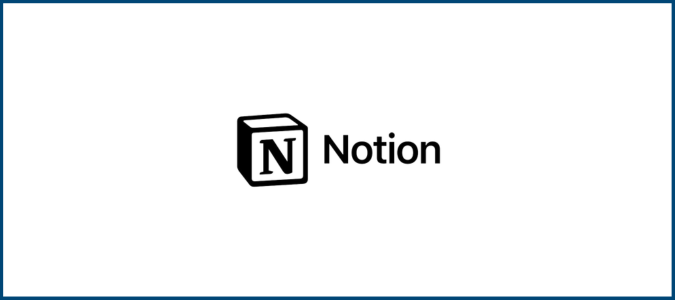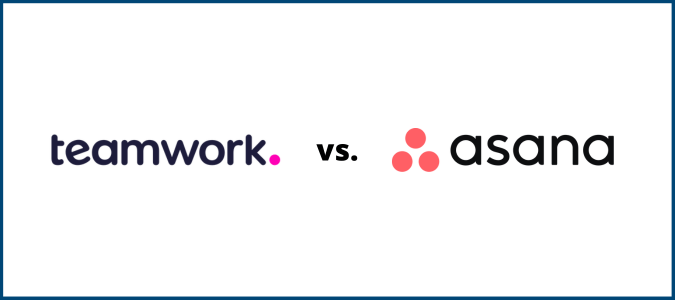Asana outperforms other project management software in several key ways. It’s easy to use, offers a robust Kanban-style interface, and is jam-packed with features. Plus, it only takes a few minutes to get up and running with Asana. We’ve compiled all the great—and not-so-great—parts of Asana into this review to help you decide if it’s right for you.

Asana Compared to the Best Project Management Software
Asana is a strong choice for organizations that want a simple tool without sacrificing power or functionality. Asana made our list of the best project management software. Here are our top picks:
- Monday.com – Best for project management software for most
- ClickUp – Best remote work platform
- Smartsheet – Best for flexibility
- Teamwork – Best for client and service-based businesses
- Asana – Best balance of power and simplicity
- Trello – Best Kanban project management
You can read reviews of all our top-rated project management software to see how Asana stacks up against the other leading options.
Asana’s modest price point makes it easy for businesses with any budget to afford. You’re getting a great value with Asana compared to other tools. Not quite ready to commit to a paid subscription? No problem. Asana’s free forever plan is second to none.
Asana: The Good and The Bad
Most good things in life come with some type of drawback. Asana is no exception. But the software has enough positives to outweigh the negative features.
What Asana Is Good At
Feature-rich free plan: Many free plans for project management software lack the bells and whistles you need for success. But that’s not the case with Asana. In fact, of all the project management software we tested, Asana notches a spot at the top thanks to its free plan.
Most other PM software’s free plans are so restrictive that they’re not functional for small businesses. But Asana doesn’t hold back—its free plan supports unlimited teams, projects, messaging, activity logs, file storage, multiple project views, and more. If you have less than 15 users and only need to manage basic projects, you’ll never need to upgrade and can stay on the free plan forever.
You can even integrate Asana with your favorite time tracking tools without paying a penny. This is a rarity for PM software as most solutions charge extra for time tracking and don’t allow integrations on the free plan.
Overall, Asana’s free plan is an absolute steal.
Multiple project views: With Asana, users can view projects and manage tasks in several different ways, including Kanban boards, lists, calendars, portfolios, workloads, and timelines. Other project management tools on the market only offer one or two views, so it’s great to see that Asana gives you every option you’d ever need. A 2015 study presented at the Graphics Interface Conference in Halifax, Nova Scotia, Canada found that “tools need to be personalizable to accommodate…differences across individuals’ [project management] behaviors”. The study also found that project management tools that grow with your team are more likely to help you succeed.
Asana meets these requirements for success with ease. Each team member can manage tasks in a way that works best for them, enabling them to be as productive as possible. Switching between views also gives project managers a big-picture perspective on where the project stands. And you can even create customizable project dashboards that update in real-time. You can customize them as you’d like to see the most important information at a glance.
Asana Intelligence: Starting on June 5, 2024, anyone on a paid plan will have access to smart statuses, answers, goals, reporting, workflows, digests, and summaries. You’ll also be able to use a built-in AI editor. This goes beyond the standard AI text generation that most tools offer. It can build entire workflows, set goals, and ask questions regarding analytics to get a plain English answer without digging on your own.
Process management automation: With Asana, you can automate those repetitive tasks and processes that drag your workflow down. The Healthcare Information and Management Systems Society (HIMSS) lists the benefits of automations. According to HIMSS, they help businesses save time and money while allowing employees to do more interesting work.
And Asana makes it incredibly easy to do this.
The workflow builder helps you set up custom rules, triggers, and actions. You can use it to set up basic automations. Think cascading due dates, assigning a task to the next person in the flow, checking a box, or alerting your team in Slack when a project is done. But Asana can handle even the most complex workflows that span dozens of users, tools, and tasks. Automating processes helps ensure things get done the right way while freeing up time for more important activities
Team collaboration: Most of the project management tools we’ve tried don’t offer enough collaboration tools, causing us to look elsewhere for software to fill in the gaps. However, Asana is one of the few that can act as a single source of truth for file sharing PDFs, JPGs, Google docs, team communication, group communication, and more. This is especially helpful for organizations that have geographically distributed teams. One of the biggest challenges facing a workforce of remote employees is maintaining communication and fostering team collaboration. Asana also made our short list of recommended tools for keeping everyone on the same page, no matter where they are located.
Users can assign tasks to team members, create task dependencies, assign priorities, set due dates, adjust due dates, and chat back and forth. This all occurs within a single, centralized task card. The calendar view lets teams plan around each others’ schedules and stay up to date on changes without needing to email back and forth. All project discussions and to-do lists are managed directly in Asana, too. Even better, the software integrates with popular email apps and third-party messaging tools.
Agile and scrum support: If you’re a fan of agile project management, you’ll be glad to hear that Asana is flexible enough to support the philosophy. From sprint planning, bug tracking, product launches, work requests, roadmaps, feedback, and tracking task iterations, you get everything you need to match how you do work rather than the other way around.
Countless PM tools on the market are too rigid and simply won’t work, but Asana is great whether you prefer a Kanban, Agile, or Scrum methodology, or something in between. Asana wants to make sure you succeed with Agile on its platform, too. Asana went so far as to create a glossary to help you match the terms Asana uses to standard Agile vocabulary. Asana also created a robust guide to help you set up your Agile projects within the platform. These efforts really simplify rolling out an Agile project management approach in Asana.
Versatility: Asana is a flexible and adaptable project management software that works for many different management methodologies, business sizes, and industries. Furthermore, it’s a great choice for marketing, sales, product development, operations, human resources, IT, finance, and more. It’s an excellent tool if you plan to use it across multiple departments and to facilitate multi-departmental collaboration because it’s flexible enough for hundreds of different use cases. From event planners managing thousands of attendees to marketing teams managing dozens of campaigns across different channels and sales teams tracking leads through the pipeline, it’s versatile enough to work for just about everyone.
Powerful integrations: Asana integrates with over 100 popular third-party apps like Slack, Dropbox, Google Drive, Zapier, Tableau, Zoom, and Salesforce. These integrations can really help extend the functionality of Asana. For example, your team can instantly be notified via Slack whenever a task or project is updated in Asana. It’s worth noting that some advanced integrations, like Salesforce and Tableau, are not available with every plan.
Smart design: Thanks to the easy-to-understand layout for Asana’s dashboard, even newbies can quickly pick up the basics. Asana’s primary features are listed along the left side of the screen, so you always have access to them. Additionally, tabs across the top of the screen simplify navigation. If you want to display more information on the screen, you can temporarily hide the navigational features. Should your team have specific features you need to emphasize, you can customize the look of the dashboard.
50% off for nonprofits: You don’t have to pay full price if you’re registered as a nonprofit. A lot of software offers this, so it’s not anything special to Asana. But we love it and wanted to point it out all the same.
What Asana Is Lacking
Limited mobile app: Asana offers a free iOS and Android mobile app at every plan level. While the app is generally fine, it can be tough to use. Asana tends to work better on a full computer screen. The small screen on a mobile device just doesn’t do Asana justice. It’s difficult to get anything done beyond just quickly checking the status of a task.
Can’t assign tasks to multiple users: Asana doesn’t allow project managers to assign tasks to more than one user. In theory, this is designed to make it clear exactly who is responsible for a particular task. You can add a task collaborator or use subtasks to bring multiple users into the loop. Asana also lets you create copies of tasks for other users. But at the end of the day, tasks will only have one main assignee.
Email clutter: Many Asana users complain about the number of notification emails they get from Asana. Ultimately, you’ll have full control over your notification settings. So you can change that at any time. But it can be a bit annoying at first before you make those changes when your inbox is cluttered with Asana notifications. Fortunately, this is a simple fix.
Limited time tracking: If you need to track the amount of time your team is spending on various aspects of projects for invoicing clients, Asana may not work for you. Asana provides time tracking features in its Business and Enterprise tiers. However, you do not have these features in the Basic or Premium tiers, meaning you must track time separately.
Security: Although Asana recently added some impressive security features in its Enterprise tier, the other tiers aren’t as focused on security. In fact, if you are using the free Basic tier, Asana reserves the right to collect data about the way you are using Asana, including your mobile data.
Asana Pricing and Options
Asana Pricing
Asana has a package for everyone. As previously mentioned, it has an exceptional free forever plan. Here’s a general overview of the different plans and pricing options offered by Asana:

The packages are all very affordable.
Asana Personal
The free personal plan supports team collaboration with up to 10 users.
There are no limits to the number of tasks, projects, messages, or files you can have. You’ll also benefit from list, board, and calendar views. Recurring tasks and bulk actions make life a bit easier for repetitive work, too.

There are more than 100 integrations, which is interesting for a free plan–usually companies gate these to higher tiers. While you can’t access every integration, the free list is pretty comprehensive.
Overall, this plan is pretty basic but it’s a great place to start if you’re a solo user or a very small team.
Asana Starter
For teams larger than 10, you’ll need to sign up for Asana Starter, at a minimum. Even if you have less than 10 people on your team, many organizations like the Starter package for the additional features and benefits it offers.

One of the most significant advantages of Asana Starter is the timeline view, which is pictured above. You can use it to track dependencies and see how specific tasks and deadlines are connected with each other.
With Premium, you’ll also get basic reporting tools and dashboards for quick insights.
Status reporting is another key feature here. Users can provide quick updates without having to attend unnecessary status meetings. These reports can be updated in minutes and can even be customized with charts to highlight key takeaways.
If you upgrade to Asana Standard, you’ll get unlimited free guests, private projects, private teams, 250 monthly automations, a workflow builder, Gantt view, access to Asana Intelligence, start dates, forms, and an advanced admin console. You’ll be able to leverage all these features with up to 500 users.
This plan starts at $10.99 per user per month if you pay for a year up front. The price goes up to $13.49 if you pay monthly.
Asana Advanced
Asana Advanced is great for organizations that need more security while managing numerous projects at the same time. It’s also nice for cross-departmental use at this tier.
One of our favorite parts of Asana Advanced is the ability to set goals at a company level. This allows managers to connect goals to specific projects, so everything stays on track. Executives and managers can see progress towards these goals at a glance, which can help identify issues before they become a major roadblock.
The Advanced package also comes with a tool for managing project portfolios to see all of your team’s work in a single location. The portfolio view shows the project name, the status, percentage of project completion, due dates, and priority level.
Even if you have multiple projects going on, it’s easy to keep an eye on everything.

Another top feature of Asana Advanced is the workload management tool.
Managers can determine which team members have additional bandwidth and which ones are overwhelmed with work.
This is really helpful in terms of resource planning and ultimately helps boost efficiencies.
Overall, the price point of $24.99 is justifiable for larger teams. As long as you’re taking advantage of the advanced features, Asana Advanced is worth it.
Asana Enterprise
Asana offers two enterprise plans. The first removes the 500 user limit and offers 24/7 support, unlimited portfolios, universal workload balancing, custom branding, and more granular permissions.
The second adds even more security and administrative control.

With an Enterprise subscription, you can take Asana beyond project management. You’ll have access to complete work management tools as well. Examples include configurable member settings, advanced admin controls, SAML authentication, and increased data control.
The plan comes with enterprise-grade security, privacy controls, and data governance. It’s compliant with GDPR, PCI DSS, CCPA, and more.
At this level, you’re not really getting any additional project management benefits. If that’s all you need, one of the lower plans will suit you just fine. Enterprise is more about user provisioning, security, and enterprise-grade work management.
Contact the Asana sales team for a custom quote if you’re interested.
Asana in Summary
Asana made our review of the best project management tools.
It’s ideal for managing remote teams and fostering collaboration across spread-out workforces. We also love that the platform is intuitive and easy to learn. Despite its simplicity, Asana still offers plentiful automation triggers to help streamline workflows.
We at Crazy Egg definitely recommend giving Asana a try. It’s affordable and can support a wide range of potential use cases, including agile project management. Sign up today and see what Asana can do for you and your team.















